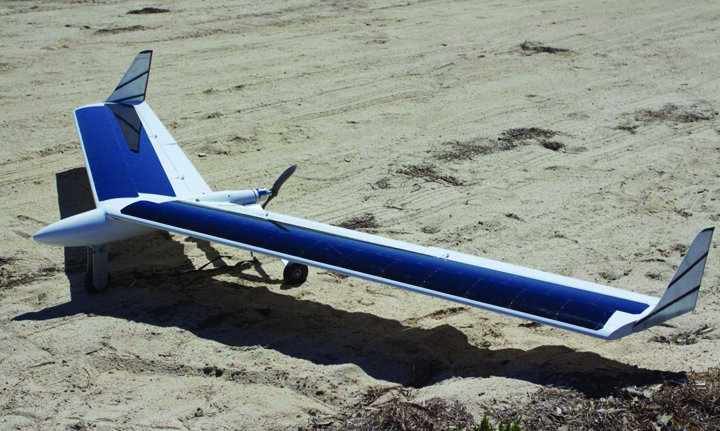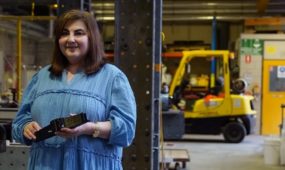SA designers crack secrets of the solar drone
Innovation
A FATHER and son Australian company has developed a new process to create a lightweight, solar-powered drone, which they hope will be able to fly almost indefinitely during daylight hours.

Sign up to receive notifications about new stories in this category.
Thank you for subscribing to story notifications.

Praxis Aeronautics has worked out a new way to encapsulate standard solar cells in composite material without losing efficiency, thus solving one of the key problems that had been holding back solar-powered aircraft – the weight and cost of accommodating solar cells.’
Praxis, based in Adelaide, has attracted the attention of the South Australian Government’s early commercialisation fund, which will contribute AU$150,000 to the company’s efforts to produce a larger prototype to entice the market.
Don Donaldson and son Cameron believe their approach will have numerous commercial applications, from aerial mapping for the mining industry, to cheaper shark spotting in summer and fast deliveries of medicines to remote communities.
Petrol-powered drones are expensive, electric drones have limited flying time and, until now, developers of solar drones have grappled with either the weight of fixing solar panels, or the expense of creating body materials that incorporate solar cells.
Another approach used to crack the market, says Cameron, has been the use of a thin film of solar cells that can be wrapped over the body of the drone, but that technology costs about $35,000 per square metre compared to the Praxis method at $1000.
The Praxis solution is to use a laminating process to incorporate ordinary (therefore cheap) solar cells in the composite material of the aircraft – a process that Cameron Donaldson has used in the shipbuilding industry to encapsulate timber in the construction of high-end yachts.
That process can give marine craft the glossy look of a classic timber boat, but with the durability of fibreglass.
His patent attorney suggested that solar cells might be a profitable new application for the process, which others have tried and failed to achieve in solar aircraft.
“Through the process of taking out a patent, we have discovered that people have tried and they’ve got close,” Cameron said. “The issue has been making laminates that are perfectly clear (to allow the cells to operate at maximum efficiency.”
Applying the process to a drone also made sense commercially.
“It’s the best application to prove the worth of the process, because it’s a relatively small product to manufacture, and no other product we have come across has had the improvement factor,” says Cameron. “We have been able to improve the flight duration by six times (most electric drones can only fly for one hour).”
Don Donaldson said the Praxis technology was “disruptive” because it enabled standard solar cells to be used in a much more productive fashion at a cheaper cost and with greater aerodynamics than other methods.
“It also doesn’t add substantial weight to the product,” he says.
The challenge for the company has been to create a larger prototype, to show off to the market – and that’s where the Government funding will help.
“Everyone will want to see it fly before they commit,” says Don.
The ultimate goal is to create a drone that can fly in daylight hours for a virtually unlimited number of hours. The drone will have a battery on board and will become, essentially, it’s own charging station – able to land and recharge when power gets low, before taking off again.
There has been worldwide interest in the possibilities of solar-powered drones, with mixed success.
Google killed off its own solar-powered drone program earlier this year. It had planned to develop craft that could fly at high altitudes for long periods of time to beam internet to remote areas that lacked access.
The Donaldson’s plans for their drone are closer to earth and include a broad range of potential applications including aerial mapping, deliveries, environmental management and a much cheaper alternative to piloted fixed-wing or helicopter shark patrols.
The NSW Government trialled shark spotting drones on NSW beaches last summer.
The South Australian Government’s $10 million Early Commercialisation Fund, administered by innovation agency TechInSA, provides staged grants of up to $500,000.
The Government says it has received 240 expressions of interest in the fund.
Manufacturing and Innovation Minister Kyam Maher said companies like Praxis were “looking at gaps in the market and using advanced manufacturing and the latest technologies to make these ideas into reality”.
Jump to next article



